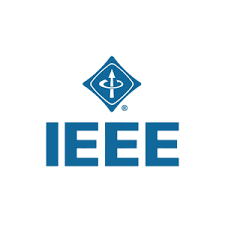Register for the event
Nano Electronics in “Beyond Moore’s Law” Era
Dr. Meyya Meyyappan
Chief Scientist for Exploration Technology, NASA’s Ames Research Center
Date: Tuesday, October 23, 2018
Time: 3:00 PM – 4:00 PM
Engineering Building IV, Shannon Room (54-134)
Followed by coffee and refreshments in the Maxwell Room (Engr. IV, Room 57-124)
Abstract:
The Heterogeneous Integration Roadmap (HIR), jointly sponsored by IEEE (Electron Devices Society, Nanotechnology Council), ASME and SEMI, is currently working on a Roadmap for Beyond Moore’s Law era. Heterogeneous Integration refers to the integration of separately manufactured components into a higher-level assembly that, in the aggregate, provides enhanced functionality and improved operating characteristics. One of the 20 working groups focuses on Emerging Research Devices and as the Chair of the ERD Working Group, I am aware of about 15 different candidates including neuromorphic devices, quantum devices and many others. I will discuss two of the emerging areas, (nanoscale vacuum electronics, printed electronics), from our work at NASA Ames Research Center.
We have been fabricating nanoscale vacuum tubes over the last four years using entirely and exclusively silicon technology. Vacuum is superior to any semiconductor in terms of electron transport, in addition to being immune to all radiations. We have combined the best of vacuum transport and silicon technology to fabricate surround gate nanoscale vacuum transistors on 8″ wafers with a channel dimension of 50 nm. These vacuum transistors, operating at a drive voltage of only 2 V, which is remarkable for vacuum devices, have the potential for THz electronics and several other applications.
This talk will also provide an overview of emerging printable electronics including gas sensors, biosensors, memory devices, energy storage devices, antennas, triboelectric nanogenerators and others. In addition to printing the devices and integration of the devices into systems, tool development is receiving attention, rightfully so in order to meet the anticipated demands of internet of things (IoT). An atmospheric pressure plasma jet printing technology enable a one-step printing without the need for post-deposition thermal treatment. This is an alternative to inkjet printing for printing conducting, semiconducting, insulating and other materials on a variety of flexible substrates.
Biography:
Dr. Meyya Meyyappan is Chief Scientist for Exploration Technology at NASA Ames Research Center in Moffett Field, CA. Until June 2006, he served as the Director of the Center for Nanotechnology. He is a founding member of the Interagency Working Group on Nanotechnology (IWGN) established by the Office of Science and Technology Policy (OSTP). The IWGN is responsible for putting together the National Nanotechnology Initiative.
Dr. Meyyappan has authored or co-authored over 375 articles in peer-reviewed journals and made over 250 Invited/Keynote/Plenary Talks in nanotechnology subjects across the world and over 250 seminars at universities. His research interests include carbon nanotubes, graphene, and various inorganic nanowires, their growth and characterization, and application development in chemical and biosensors, instrumentation, electronics and optoelectronics.
For more information, contact Steven Moran at smoran@ieee.org.


Leave a Reply